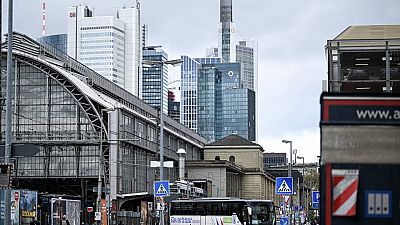A closer look at house prices in 25 major cities around the world shows a sharp decline in prices, according to a study.
The risk of 'overblown' property prices has decreased in the world's biggest cities this past year, according to a recent study by Swiss bank UBS.
Its latest Global Real Estate Bubble Index, examining 25 of the largest cities across the world, shows that real house prices fell by 5% on average and that this trend is likely to continue.
The price corrections cited in the report significantly lowered the risk of a real estate bubble in the cities, something that hit the globe hard during the financial crisis in 2008.
According to the report, only two cities -- Zurich and Tokyo -- remain in the "bubble risk" category, down from nine cities last year.
Frankfurt, Munich and Amsterdam are the cities in Europe that have dropped to the lower-risk "overvalued" category, to join Geneva, London, Stockholm and Paris, which remain unchanged from the previous year.
Madrid has also seen a drop in property price imbalances, according to UBS, meaning it's now "fairly valued", alongside Milan and Warsaw.
A real-estate or housing bubble occurs when property prices rise at a rapid and unstainable pace due to an increase in demand and limited supply. At some point, demand suddenly freezes or decreases, leading to a sharp drop in prices which bursts the bubble.
A shaking house of cards
UBS puts the general decline in housing market imbalances down to the current economic climate, which has seen a global surge in inflation and interest rates over the past two years owing to Russia's invasion of Ukraine and the COVID-19 pandemic, among other factors.
From mid-2022 to mid-2023, real house prices in the 25 cities UBS examined fell by 5% on average, the bank said, adding that further downside in prices is likely.
The biggest fall was seen in Frankfurt and Toronto, according to UBS, which both saw prices tumble by 15%. The two cities had the highest risk scores in last year’s edition of the UBS report.
"Low financing costs have been the lifeblood of global housing markets over the past decade, driving home prices to dizzying heights," the authors of the report said. "However, the abrupt end of the low interest rate environment has shaken the house of cards."
Now only Zurich, where UBS's HQ is situated, and Tokyo are at risk of a real estate bubble, according to the report.
In the case of the former, real home prices continued to rise throughout 2023, albeit at a slower pace than in previous years, UBS said, while rental growth accelerated sharply and surpassed house price growth.
"As the supply of available housing has climbed back to pre-pandemic levels amidst rising financing costs, we do not expect to see further price upside," the bank added.
Access to housing is still a problem
While the likes of Paris and London have seen price corrections and are at lower bubble risk than Zurich, the fall in prices has not been enough to significantly improve access to housing, according to UBS.
Prices remain disconnected from wages in Paris and London, the bank said, noting that the purchase of a 60 square metre home still represents 10 years' annual salary for a qualified employee in the service sector.
Faced with this disconnect, UBS says a further fall in prices is still likely if interest rates remain at their current high levels, even if the housing shortage could then recover.



